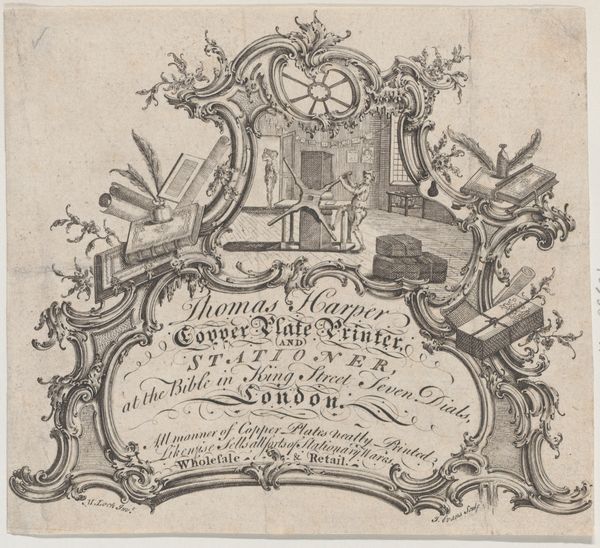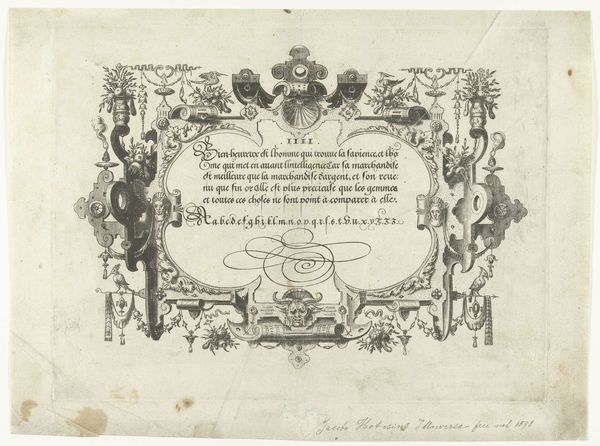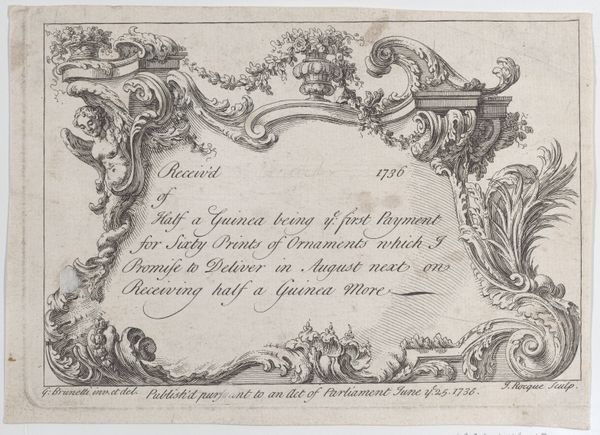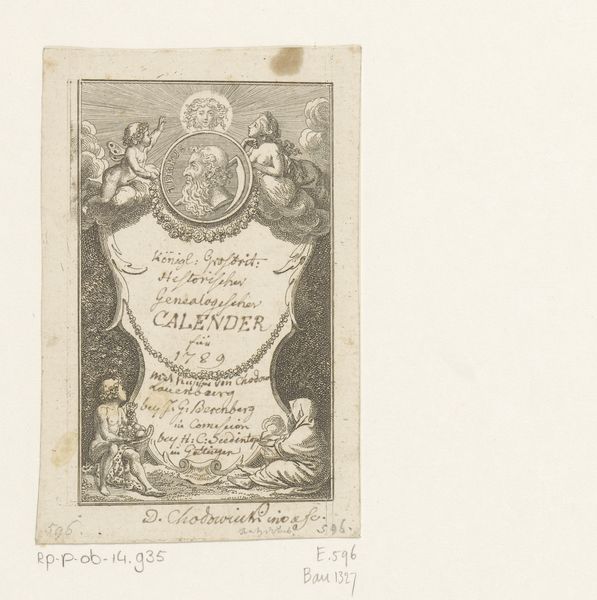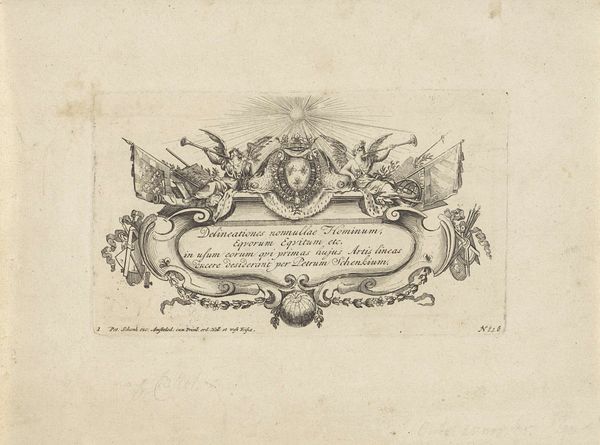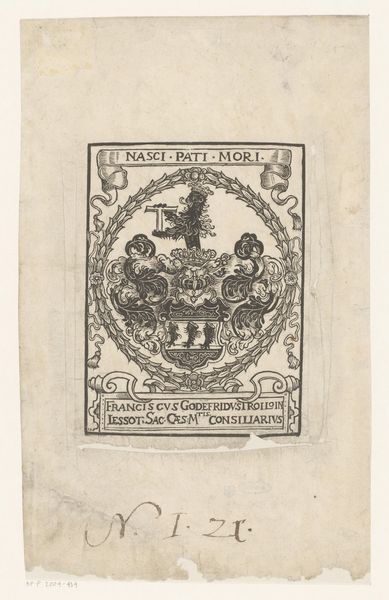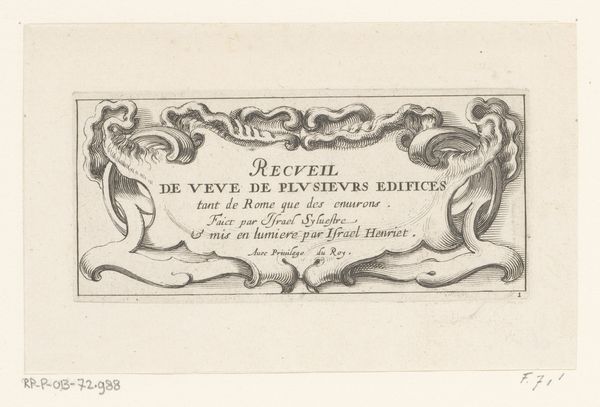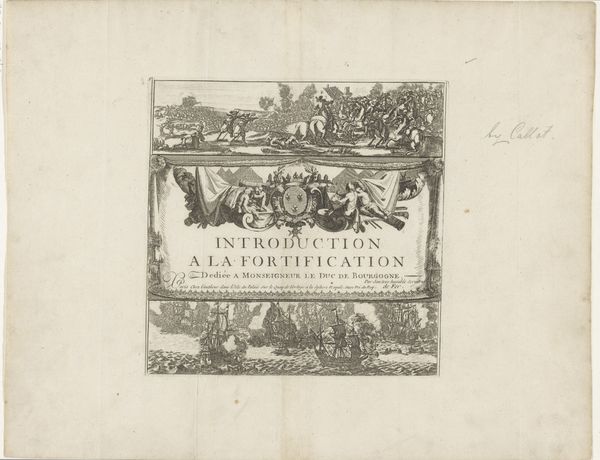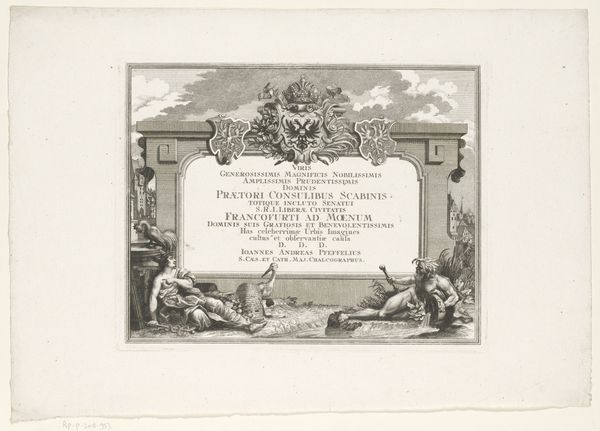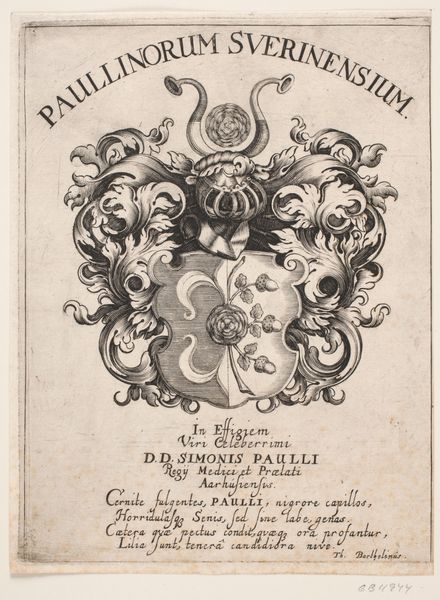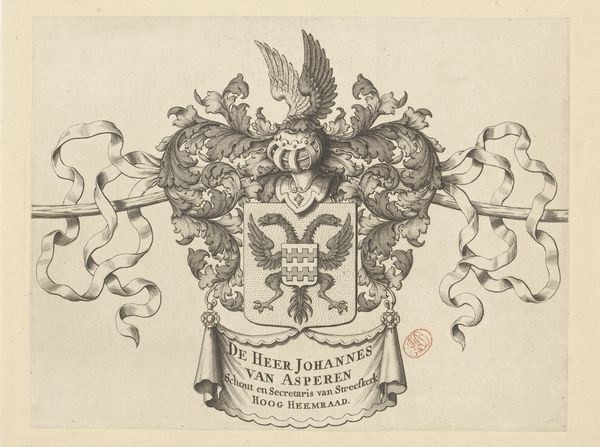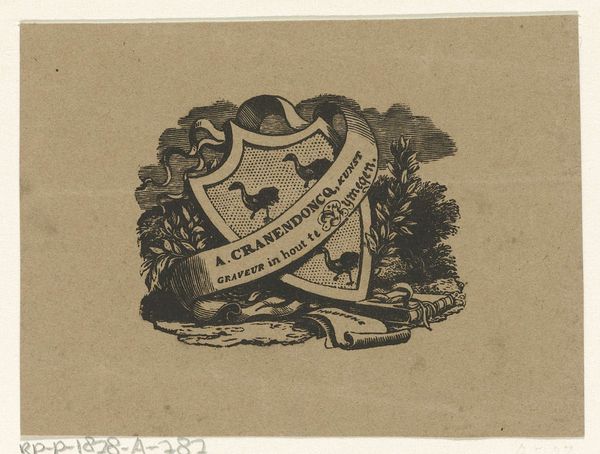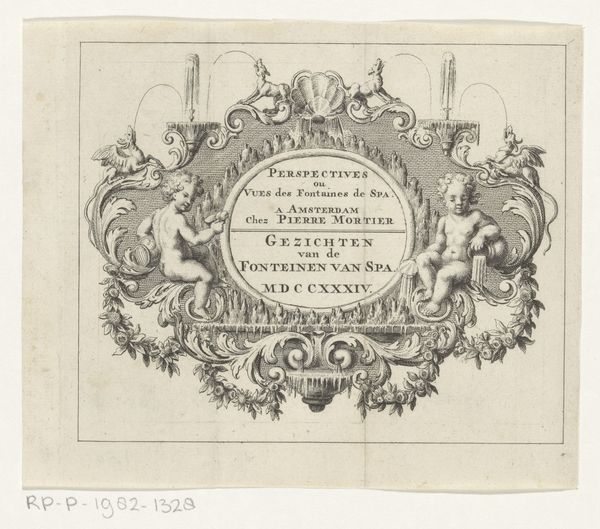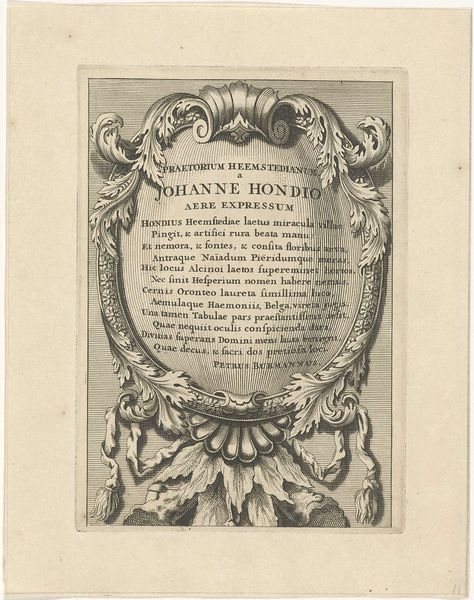
Ex libris van de boekverkoper Prosper Marchand 'In den Parijschen boekwinkel' in de St. Jacobsstraat te Amsterdam 1683 - 1733
0:00
0:00
Dimensions: height 89 mm, width 106 mm
Copyright: Rijks Museum: Open Domain
Editor: We're looking at Bernard Picart's "Ex libris van de boekverkoper Prosper Marchand," dating from sometime between 1683 and 1733. It's an engraving, and something about the central phoenix feels very powerful and symbolic. What strikes you most about this piece? Curator: Ah, an Ex Libris! It's a bookplate, isn't it? More than just a pretty picture, it's a portal! See how Picart, with that baroque flourish, whispers tales of Prosper Marchand, the bookseller? He's chosen a phoenix, a blaze of rebirth right at the heart. Now, tell me, what does a phoenix tell *you* about a bookseller? Editor: Hmm, maybe the bookseller sees his trade as constantly reviving old stories and ideas? Curator: Precisely! He is dealing with eternal wisdom! See how the banner proclaims "Post Funera Vitam Reddit"– after death, life returns? What a wonderfully dramatic declaration for something we stick *inside* a book! It hints at the resurrection of knowledge, wouldn’t you say? Plus, it's got a little visual pun, see it? His shop is in Jacob's street, *sub phoenice* –under the sign of the phoenix! Editor: Oh, clever! I didn't catch that. It’s like a tiny advertisement embedded in art. Curator: Exactly! Isn't it fabulous how a small print can be so layered? It shows how symbolism was rooted in baroque thought, turning something simple into a dense nest of significance. Do you agree with this symbolic portrayal? Editor: I never would have thought a bookplate could reveal so much. Looking closely has turned a simple image into something so vivid. Curator: Agreed. It has turned a static drawing into a lens of our rich European History.
Comments
No comments
Be the first to comment and join the conversation on the ultimate creative platform.
